Top 6 Plants to Grow in Containers
By Mark and Ben Cullen
https://www.instagram.com/markcullengardening/
https://www.facebook.com/MarkCullenGardening/
Early spring, for gardeners, is like looking at a plate of your favourite food, it is hard to know where to begin. We suggest that you start in the garden or in the dirt in some containers.
Truth is, many plants lend themselves to the confines of a pot while others do not. Corn is a bad choice for a pot. It is too large, top heavy, demands lots of water and it really does not like to have its roots restricted.
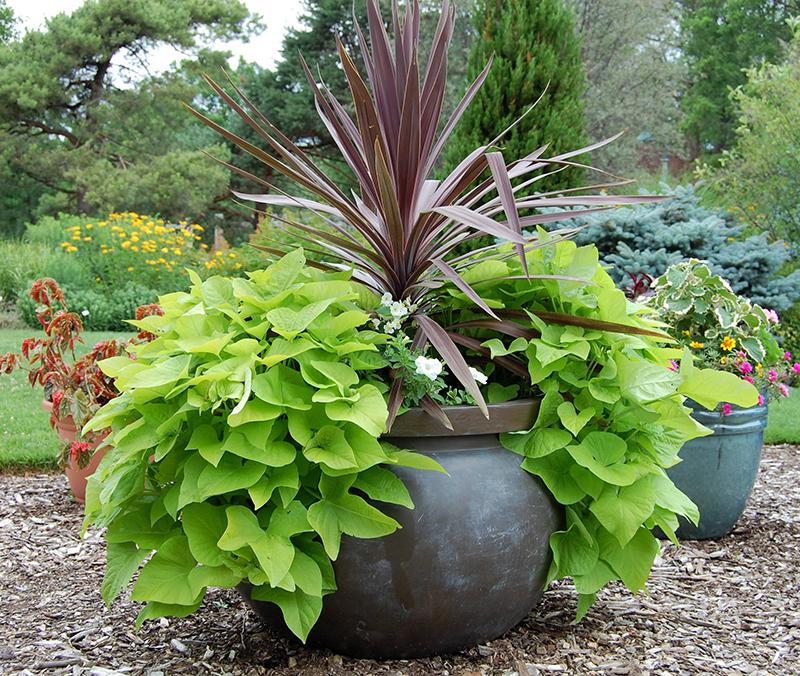
We have changed how we plant in containers in recent years. Remember the large containers that people placed at their front door filled with rose-coloured geraniums, a couple of ivies or lobelia and a dracaena or ‘sword plant’ in the centre? We don’t do that anymore. Bell bottoms and sideburns are out too.
Today, the rule is ‘almost anything goes’. Indeed, we are now mixing food plants with perennials, annuals with miniature roses and herbs with everything. The only rule is to make sure that you place your containerized plants in an exposure that works for them. A sun loving petunia does not do well in the shade.
Our favourite 6 plants for containers:
1. Coral Bells [Heuchera]. There have been so many new introductions in this family of winter hardy perennials in recent years that we have had trouble keeping up. The foliage of Coral Bells can be spectacular, so the flowers are a bonus. They mature to between 15 cm and 65 cm in breadth and width. Stick with the more compact varieties for best performance in containers. Our favourite varieties are Marmalade, Blackout and Caramel all of which are perfectly named as they look as their name suggests. We are going to try the new Root Beer this year as we appreciate roots and really like beer. Sun to part shade.
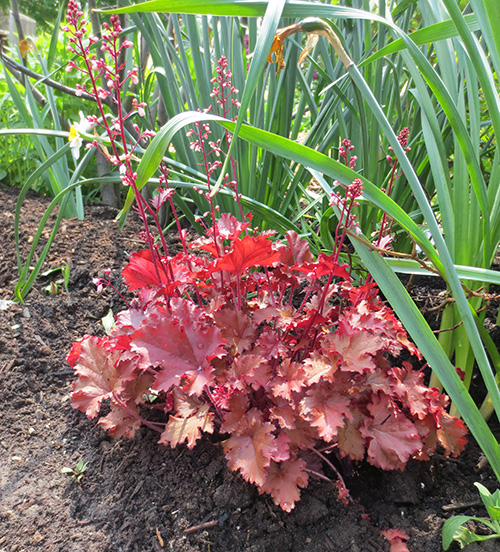
2. Hostas. Another plant that you will grow for the foliage and consider the flowers a bonus. Again, stick with the smaller varieties. Hostas will tolerate being dry between water applications. The flowers attract hummingbirds and the foliage is to die for, in many cases. Our favourites include June [yellow/green mid sized], Striptease [green chartreuse] hosta of the year in 2005 and Guacamole [green] hosta of the year in 2002. Our friend Paul Zammit, recently from the Toronto Botanical Garden, has perfected the art of growing and overwintering hosta in his garden. He recommends that you place the pot and all in your garage over winter. Part sun or shade during growing season.
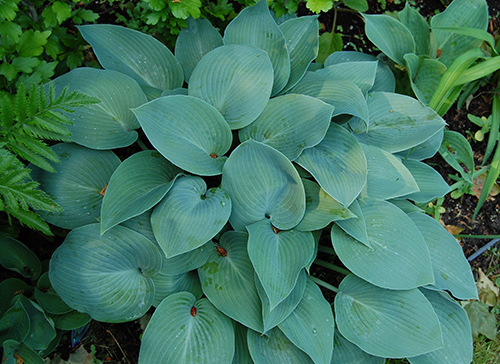
3. Million Bells. Remember petunias? They are still popular. However, million bells look like petunias with smaller flowers, but they actually produce more colour. They flower longer and do not require pinching or cutting back as petunias often do. They don’t know when to stop blooming, which is why they look great late in to fall when many other annual flowers have pooped out. They do need to be fed. Be sure to apply a slow release fertilizer at the time of planting. One shot, good for the whole season. Available in brilliant, bold colours on the hot side of the colour wheel [orange, red and rose].
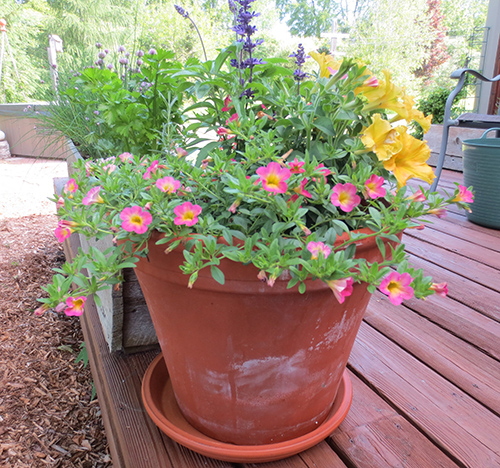
4. Boston Fern. Not the old Boston Fern that dropped leaves everywhere when you bump into it, but any of the new varieties that hold their foliage and fill out all season to create a relaxed, country feel wherever they grow. Mark puts 8 of these at the front of his house each summer in hanging baskets and large clay pots and they never disappoint. They forgive him when he doesn’t water them regularly and they look their very best when the frost arrives in late fall.
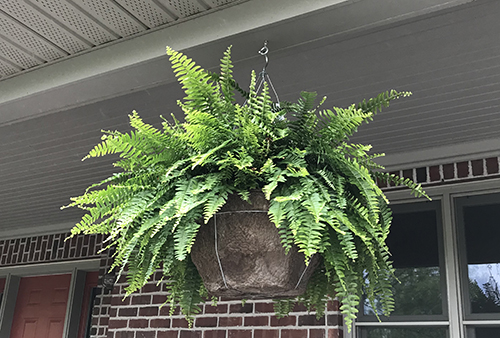
5. Roses. Not just any rose but everblooming, disease resistant, small to medium in stature bush roses. Look for Oso Easy from Proven Winners. They are great garden performers in containers. Knock Out roses are equally colourful and reliable. We recommend that you remove roses from containers in the fall and plant them in the garden over winter where they are better insulated. Come spring, dig them up and place them back in containers.

6. Herbs. All herbs lend themselves to container growing, except a giant like dill. Most herbs originated in the Mediterranean region and enjoy being on the dry side, do not like to be fertilized and thrive in the hot, blazing sun. Place your herb pots near the kitchen door to ensure easy access.
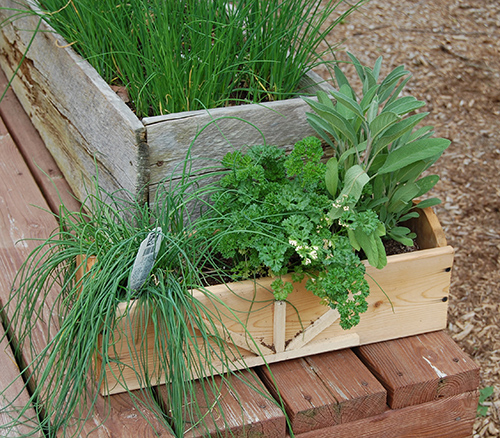
Our list of great performers in containers goes on to include geraniums, dusty miller, dwarf zinnias, sweet potato vine, spider plant, bacopa, tomatoes, peppers, small cucumbers, eggplant and virtually any plant that is compact, does not mind becoming dry between water applications and is suitable to the sun/shade exposure in your yard or condo balcony.



